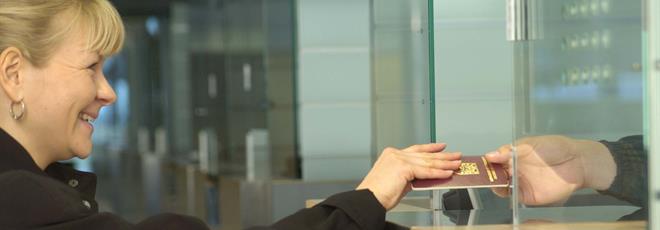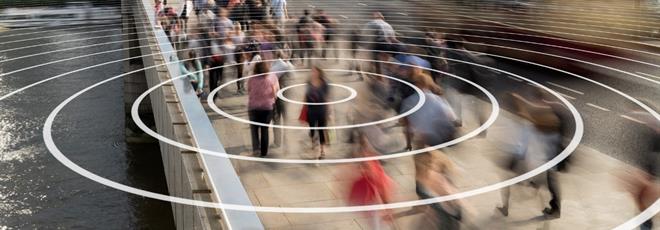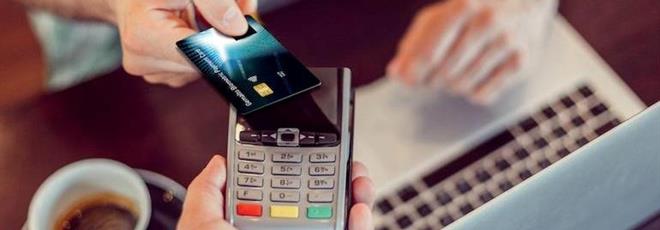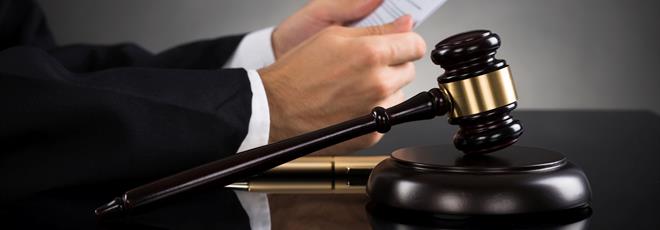what is biometrics and where was it said to have started
Most importantly, awareness and acceptance accept been boosted in the past 7 years, every bit millions of smartphone users are unlocking their phones with a fingerprint or a face.
Again, biometric systems are great wherever identification and authentication are disquisitional.
#ane Police force enforcement and public security
Law enforcement biometrics refers to applications of biometric systems that support law enforcement agencies.
This category tin include criminal I.D. solutions such every bit Automatic Fingerprint (and palm print) Identification Systems (AFIS). They store, search and retrieve fingerprint images and subject records.
Today Automated Biometric Identification Systems (ABIS) can create and store biometric information that matches biometric templates for the face (using the then-called mugshot systems), finger, and iris.
Discover the work of forensic analysts in our video.
Live face up recognition - the ability to perform confront identification in a crowd in existent-time or mail service-issue - is likewise gaining interest for public security - in cities, airports, at borders, or other sensitives such as stadiums or places of worship.
These surveillance systems are existence tested or used in many countries. They are challenged and sometimes put on agree. Read California bans law enforcement from using facial recognition.
#two Armed forces - Know your enemy
Much is unknown almost how defense agencies around the world employ biometric information.
The fact is that data is difficult to come past and share every bit it is not public.
The United States military machine has been collecting faces, irises, fingerprints, and Dna data in a biometric identification system since January 2009.
The biometric program started as early on as 2004 and initially nerveless fingerprints.
Who's in charge?
The Defense Forensics and Biometrics Bureau (DFBA) manages the arrangement, known as the DoD Automated Biometric Information System.
According to OneZero (6 November 2019), the 7.four million identities in the database are, for the vast majority, coming from military operations in Iraq and Afghanistan.
For 2008-2017, the DoD arrested or killed ane,700 individuals based on biometric and forensic matches (U.S. Government Accountability Part website - see page 2/59).
In the first half of 2019, biometric identification has been used thousands of times to identify non-U.South. citizens on the battlefield.

#3 Border command, travel, and migration
Theelectronic passport (e-passport) is a familiar biometric travel document. The second generation of such documents, besides known as biometric passports, includes two fingerprints stored and a passport photograph.
But think about it for i minute.
Over one.two billion eastward-passports were in circulation in 2021.
That means over ane.2 billion travelers have a standardized digital portrait in a secure document. It's a windfall for automatic border control systems (aka e-gates) but also for self-service kiosks.
- The photograph speeds upwardly border crossing through scanners, which use the recognition principle past comparison the face or fingerprints.
- Cheque-ins and bag-drop solutions also increase speed and efficiency while maintaining loftier levels of security.
Needless to say, for airports and airlines, providing passengers with a unique and enjoyable travel feel is a business organisation priority.
Biometrics provides hither irrefutable evidence of the link betwixt the passport and its holder.
- Biometric authentication is done past comparing the face/fingerprint(s) seen/read at the edge with the face/fingerprints in the passport micro-controller. If both biometric data friction match, authentication is confirmed.
- Identification, if necessary, is done with the biographic data in the bit and printed.
Besides, many countries accept ready biometric infrastructures tocontrol migration flows to and from their territories.
Fingerprint scanners and cameras at border posts capture information that helps identify travelers entering the country more precisely and accurately.
The same applies to consulates for visa applications and renewals in some states.
The U.S. Department of Homeland Security's Customs and Border Protection (CBP) declared that more 43.7m individuals had been scanned at border crossings, outbound cruise ships, and elsewhere and so far. This process helped stop 252 people from attempting to use another person's passport to cross the border. (5.B., 6 February 2020.)
Nosotros describe in detail three examples of biometric databases:
- The U.Due south. Section of Homeland Security's IDENT biometric organisationisthe largest of its kind (over 200m people in the base of operations and most 260m by 2022.)
- The European Union's EURODAC, serving 32 nations in Europe (biometrics for asylum seekers)
- The ambitious EuropeanEntry/Get out System (EES) isto be put in place in 2022.
#four Healthcare and subsidies
Other applications, chiefly national identity cards, are widespread in European and Middle Due east countries or Africa for I.D. and health insurance programs, such as in Gabonese republic.
With these biometric I.D. cards, fingerprints are used to confirm the bearer's identity earlier accessing governmental services or healthcare.
Why is it so?
In Gabon, for example, even before the program started, it was clear to anybody that authorities had to implement all resources to avert the health cover program turning into a heart of attention for neighboring countries' citizens.
This feature was crucial to ensure that the program's generosity would non collapse through the fraudulent use of rights.
Hence beneficiaries are individually identified and then that access to intendance can exist reserved for them. The authorities decided that insured parties' identification volition be nominative with implementing a Gabonese private health insurance number.
Civil data, a photograph of the holder, and ii fingerprints are digitized inside the microprocessor, ensuring this data's encryption and protection.
Hospitals, pharmacies, and clinics apply wellness insurance cards to check social security rights while protecting personal data confidentiality.
Terminals are performing checks with fingerprint sensors.
#v Civil Identity, population registration, and voter registration
AFIS databases (Automated Fingerprint Identification System), oft linked to a civil register database, ensure citizens' identity and uniqueness to the remainder of the population in a reliable, fast, and automated way.
They can combine digital fingerprints, photos, and iris scans for higher reliability.
Civil identity and population registration
India'due south Aadhaar projectionis allegorical of biometric registration. It is the world's almost extensive biometric identification system and the cornerstone of reliable identification and hallmark in India.
The Aadhaar number is a 12-digit unique identity number issued to all Indian residents. This number is based on their biographic and biometric data (a photograph, 10 fingerprints, two iris scans).
1,322,356,588 Aadhaar IDs have been issued every bit of 27 January 2022, covering more than 99% of the Indian adult population.
Yeah, you read that correct: it's over 1.iii billion people. India's population was estimated at 1.4B in January 2022.
Initially, the project has been linked to public subsidy and unemployment benefit schemes, just it at present includes a payment scheme.
According to Finance minister Arun Jaitley in his speech of ane February 2018, Aadhaar provides an identity to every Indian that has made many services more accessible to the people.
It has reduced:
- Corruption,
- Price of delivery of public services,
- Go-betweens.

Biometric voter verification at work: identification is fabricated with bar code, verification with a fingerprint.
Voter registration
Biometrics can also exist critical for the "1 person, 1 vote" principle.
Please visit our spider web dossier onbiometric voter registration to know more most this aspect.
#half dozen Physical and logical access control
Biometric access control systems help to preclude unauthorized individuals from accessing:
- facilities (physical access control)
- reckoner systems and networks (logical access contro 50) based on biometric authentication.
In I.T., biometric access control can complement user authentication and supports organizations'Identity and Access Management (IAM) policies.
Unlike codes, static passwords, one-time passwords, or access cards that rely on data that can be forgotten or lost, biometric hallmark is based on who people are (and not what they have).
In the mobile world, smartphones (a form of I.T. system) at present usually include fingerprint and facial recognition features.
The iPhone 5 was the starting time to innovate fingerprint recognition in 2013 (with Bear upon ID), and facial recognition became trendy with the iPhone X introduced in November 2017 (with Face ID).
Many Android phones have this feature (combined with iris scanning).
#vii Commercial applications
KYC (Know Your Client) or KYC cheque is the mandatory process of identifying and verifying the client's identity when opening an account and periodically over time. (source: what is KYC ? – Thales).
Today, it is a significant chemical element in the fight against financial criminal offence and money laundering.
With biometrics, banks, fintech organizations, or even telecom operators can make customer mandatory KYC checks (Know Your Customer) faster and more efficiently using biometrics.
The pandemic has accelerated online digital onboarding, and banking concern account opening as many branches were temporarily closed. Businesses have been developing mobile user-friendly onboarding processes, including facial recognition as a critical feature for identity verification.
In India, Aadhaar-based KYC for mobile connections and bank accounts is authorized (Aadhaar subpoena act July 2019).
The UIDAI (Unique Identification Potency of India), in accuse of the programme, initially kept all authentication services gratuitous for all to lower the barrier to entry.
It has merely begun charging relying parties in 2019.
Since 2019, private organizations are charged Usa$0.007 for Aadhaar authentication (for a yes/ no challenge) and US$0.iii for e-KYC transactions.
Retailers can leverage facial recognition to place a premium customer or a former shoplifter as shortly as they come up into the store. If the organisation recognizes one, it alerts the store manager.
The technology is a powerful marketing enabler or can be practical to policing.
- That'due south what U.Grand.'s The Guardianclaims (04 August 2019) as it states that information technology has become pointless to report shoplifting to the police in the country. Retailers accept to notice solutions to tackle an estimated £700m ($900m)loss. They turn to facial recognition solutions.
- Co-ordinate to the NYmag website (October 2018), U.S. retailers besides utilize facial recognition. Almost all the top U.Due south. companies take facial recognition in their plan or have investigated its potential. Walmart dropped it, Target is not communicating on it, Lowe'south uses the technology, and Saks Fifth Artery uses it in Canada.
Nevertheless, privacy laws in Illinois, Texas, Washington, and California (equally of January 2020) and New York country's SHIELD ( as of March 2020) will pose a serious challenge to these efforts.
Civil liberties groups want an embargo on this technology and a precise autonomous debate about the place that facial biometrics should take in our lives.
The debate is not over. Stay tuned.
Visit our spider web dossiers to learn more about current trends in biometrics and privacy, consent, and function creep.
The biometrics market
According to Global Markets Insights, the global biometric market is expected to peak USD l billion by 2024.
Not-AFIS will account for the highest biometrics market share, exceeding USD 18 billion past 2024.
Biometric applications in the security and government sectors of Northward America are driving the regional market trends. With the U.S. at the captain, the study claims N America will correspond more than than 30% of the overall biometrics industry share by 2024.
The Asia Pacific region volition also be witnessing robust growth.
Governmental initiatives like CRIC (China Resident Identity Carte du jour) and the push for facial recognition or India's Aadhaar have genuinely favored the commercialization of APAC'southward biometrics industry.
Why multimodal biometrics?
The most well-known techniques include fingerprints, face recognition, iris, palm, and DNA-based recognition.
Multimodal biometrics combines several biometric sources to increment security and accurateness.
Multimodal biometric systems commonly require two biometric credentials for identification, such as face and fingerprints, instead of one.
They tin overcome limitations commonly encountered in unimodal systems.
For several years now, using several biometric features in combination, such every bit the face up and the iris or the iris and fingerprints, has considerably reduced error rates.
 Biometrics can also enhance multi-cistron hallmark (MFA).
Biometrics can also enhance multi-cistron hallmark (MFA).
Geolocation, I.P. addresses, and keying patterns tin create a powerful combination to cosign users securely.
Advantages of biometric data
Any the method, what all these biometric techniques have in common is that they all collect homo characteristics:
- Universal, as they tin be establish in all individuals.
- Unique, as they make it possible to differentiate i private from some other
- Permanent, equally they don't change over time
- Recordable (with or without consent)
- Measurable, allowing for futurity comparison
- Forgery-proof (a face, a fingerprint)
Who needs biometrics?
A improve question would be: what for?
The elementary truth is that solutions are related to the challenges to be met.
For example, the justice systemmust have the necessary time to identify a criminal and not accept the slightest mistake. It volition non be worried about a lengthy and costly process.
An everyday individual will seek to protect their personal property and accept access to it apace, at a reasonable price.
Governments and public administrations are, in their case, confronted with multiple issues at in one case.
Retrieve about it.
- They have to make it easier to cantankerous borders while controlling illegal immigration, fight terrorism, cybercrime, or electoral fraud.
- They demand to issue documents compliant with new international standards and regulations, guarantee the security of production systems, check such materials, and data interoperability.
- And all this should exist washed within the limits of their budgets.
Is biometrics reliable?
Biometric hallmark relies on statistical algorithms. It, therefore, cannot be 100 %-reliable when used lonely.
"false rejections" or "false acceptances."
What'due south the story here?
- In i example, the car fails to recognize an detail of biometric information that does represent to the person. It'due south a false rejection.
- The reverse case assimilates two biometric data items that are not from the aforementioned person. It'south a simulated acceptance.
"False rejection" or "false acceptance" are symptoms that occur with all biometric techniques.
How secure are biometric authentication technology and biometric data?
How accurate is biometrics in 2022?
What's the problem?
Why would biometrics not be accurate?
Think about this one minute again.
The technical challenges of automated recognition of individuals based on their biological and behavioral characteristics are inherent in transforming analog (facial image, fingerprint, voice pattern) to digital information (patterns, minutiae) that can then exist processed, compared and matched with effective algorithms.
Fingerprints
There are almost 30 minutiae (specific points) in a fingerprint scan obtained by a live fingerprint reader.
The U.South. Federal Bureau of Investigation (FBI) has evidenced that no two individuals can have more than viii minutiae in common.
Recognition decisions in biometric systems have to be taken in real-time, and, therefore, computing efficiency is disquisitional in biometric apps.
Information technology is not the case in biometric forensics, where real-time recognition is not a requirement.
Facial recognition
Facial recognition is the most natural means of biometric identification. The face recognition arrangement does non require whatsoever contact with the person.
The 1200 million electronic passports in circulation in 2021 provide a huge opportunity to implement face recognition at international borders.
And the algorithms are getting extremely accurate with Artificial Intelligence.
Co-ordinate to a 2018 NIST study, the system developers have made massive gains in facial recognition accuracy in the terminal five years (2013- 2018).
NIST found that 0.two% of searches in a database of 26.6 photos failed to match the correct image, compared with a 4% failure rate in 2014.
There's more.
In NIST'S 2020 tests, the all-time algorithm had a failure charge per unit of 0,08%.
It'due south a 50x comeback over six years.
The risks of mistake are related to very unlike factors.
- We have noted that particular biometric techniques were more or less well suited to specific categories of persons. A specific system may work for women, but less well for men or immature people, but not for older people, for people with lighter skin, simply less well for darker skin.
- Other difficulties arise, especially facial recognition, when the person dyes or cuts their hair, changes the line of their eyebrows or grows a beard.
- A verification photograph taken with a low-quality camera model can increase the take a chance of fault. The identification accuracy relies on the reliability of the equipment used to capture data.
- The adventure of error also varies depending on the surroundings and the atmospheric condition of the application. The lightmay differ from one place to some other. The aforementioned goes for the intensity or nature of background racket. The person's position may have changed.
As well, in a biometric control application, the rejection or credence rates are intertwined and tuned according to adequate gamble levels.
Information technology is not possible to modify ane without affect the other ane.
Why is it so?
In the example of a nuclear found access command awarding, the rate of faux credence will be hugely reduced. You don't want ANYONE to enter by chance.
This demand will also impact the rate of false rejections because you will tune the organisation to be highly authentic.
Y'all will probably utilize several authentication factors, including a valid I.D. in addition to biometrics (single mode or multimodal).
According to the Keesing Journal of Documents & Identity (March 2017), two complementary topics accept been identified by standardization groups.
- Ensure the captured image is from a person and not from a mask, a photo, or a video screen (liveliness check orliveness detection)
- Ensure that facial images (morphed portraits) or two or more individuals have not been joined into a reference document, such as a passport.
Can facial recognition systems exist fooled in 2021?
Read our spider web review ontop facial recognition trendsif yous want to know more.
Other biometric devices: Tokens & biometric cards
Biometrics suffers from the fact that the matching algorithms cannot exist compared to the hashes of passwords, as we said.
This ways that two biometric measures cannot be compared with each other without them, at some point, being "in plaintext" in the memory of the device doing the matching.
Therefore, biometric checks must be carried out on a trusted secure device, which means the alternatives are to take a centralized and supervised server, a trusted biometric device, or a personal security component.
Smart ID cards
This security need is why tokens and smart cards (I.D.southward or cyberbanking cards now) are the ideal companions for a biometric system.
 The S African electronic I.D. card uses biometrics.
The S African electronic I.D. card uses biometrics.
Numerous national identity cards (Portugal, Republic of ecuador, South Africa, Mongolia, People's democratic republic of algeria, etc.) at present incorporate digital security features based on the "Friction match-on-Card" fingerprint matching algorithm.
Dissimilar conventional biometric processes, the "Friction match-on-Card" algorithm allows fingerprints to be matched locally with a reference frame thanks to a microprocessor built into the biometric I.D. card without having to connect to a fundamental biometric database (one:ane matching).
Biometric sensor cards

A biometric payment card with a sensor (where the thumb is)
Integrating afingerprint scanner into smart cards is another grade of delivering a safe and convenient manner to authenticate people.
These biometric sensor cards open a new dimension in identification with an piece of cake-to-utilize, portable, and secure device.
They were launched in 2018 for the first time by the Bank of Cyprus and Thales for EMV cards (contactless and contact payment). They use fingerprint recognition instead of a Pin lawmaking to authenticate the cardholder.
In that location'southward more than.
The cards back up access, physical or online identity verification services.
Every bit the user's biometric data is stored on the card, not on a central database, customer details are highly protected if the bank suffers a cyber-attack. Likewise, if the card was to become lost or stolen, the holder'south fingerprint could not exist replicated.
Put it in another way: the biometric identifiers are checked locally and protected, as they are stored solely on the bill of fare. They never leave the card.
Biometric security
Biometrics tin can fulfil 2 distinct functions, authentication, and identification, as nosotros said.
Identification answers the question, "Who are you?". In this instance, the person is identified equally 1, among others (1: N matching). The person's personal data to be identified are compared with other persons stored in the same database or peradventure other linked databases.
Authentication answers the question: "Are yous really who you say yous are?". In this case, biometrics allows the person's identity to be certified by comparing the data they provide with pre-recorded information for the person they claim to be (one:1 matching).
These two solutions call upon different techniques.
In general, identification requires acentralized biometric database that allows several persons' biometric data to be compared.
Authentication can do without such a centralized database. The information tin simply be stored on a decentralized device, such as one of our smart cards.
For data protection, a process of authentication with a decentralized device is to be preferred. Such an arroyo involves less risk.
The token (I.D. card, military card, health carte du jour) is kept in the user'due south possession, and their data does not have to be stored in any database.
Conversely, if an identification process requiring an external database is used, the user does not have physical control over their data, with all the risks involved.
Why are biometrics controversial?
Biometric security offers many advantages (authenticating and identifying strongly) only is not without controversy. This challenge is linked to privacy and citizens' ability to control information virtually themselves.
Two types of risks can exist identified:
- The utilize of biometric information to other ends (aka function creep) than those agreed by the denizen either by service providers or fraudsters. As before long as biometric data is in the easily of a 3rd party, there is a adventure that such data may be used for purposes different from those to which the person concerned has given their consent.
Thus, in that location may be cases of unwanted cease use if such data is interconnected with other files or used for types of processing other than those for which it was initially intended. - The risk of re-employ of data presented for biometric checks. The information tin be captured during their transmission to the central database and fraudulently replicated in another transaction.
A result is a person losing command over their information, which poses privacy risks.
In practice, data protection regime seem to prefer solutions that feature decentralized information devices.
Do you desire to see how biometric data are protected around the world?

Biometrics and data protection
The "United nations Resolution" of 14 December 1990, which sets out guidelines for computerized personal data files regulation, does not take any binding force.
On a more global basis, legal deliberations rely primarily on personal data provisions in the broad sense.
Just such provisions sometimes prove to be poorly adapted to biometrics.
On the opposite, the new E.U. regulation replaces the existing national laws equally of May 2018.
The General Information Protection Regulation is straight applicable in all 27 Fellow member States of the European Wedlock and the U.Grand. as of May 2018.
And biometric data are conspicuously defined and protected.
Can this be true? Aye.
In a nutshell, it establishes:
- A harmonized framework within the E.U.,
- The right to be forgotten,
- "Articulate" and "affirmative" consent,
- Severe penalties for failure to comply with these rules.
Annotation that exterior the European Wedlock, the level of protection differs depending on the legislation in force. Bold – that is – that in that location is any such legislation.
An example is the United States, where three states (Illinois, Washington, and Texas) protected biometric data, and.. 47 did non in 2019.
But things may motility faster in 2022.
The California Consumer Privacy Act is a significant step forrad for the country. It enhances privacy rights and consumer protections for California residents and is applicable as of 1 January 2020.
Why is it important?
The CCPA may serve as a model for a future federal legal framework.
To know more than about biometric data protection in the E.U. and U.K. (GDPR), in the The states (CCPA), and contempo changes in India, discover our dossier dedicated to privacy regulations biometric data.
Putting biometric systems to work for digital security
Thales has its engineering science which, combined with its impartial stance on the source of biometric data, allows it to help everyone put their trust in the digital world.
Thales is an adept in stiff identification solutions with more than 200 ceremonious I.D., population registration, and law enforcement projects incorporating biometric security.
Every bit an independent force, the company can recommend the almost suitable solution in each case.
Thales attaches bully importance toassessing risks, which may not always exist visible to the full general public and private operators' chapters to manage such risks.
We remain convinced that biometrics offers significant benefits for guaranteeing identity.
Source: https://www.thalesgroup.com/en/markets/digital-identity-and-security/government/inspired/biometrics
0 Response to "what is biometrics and where was it said to have started"
Post a Comment